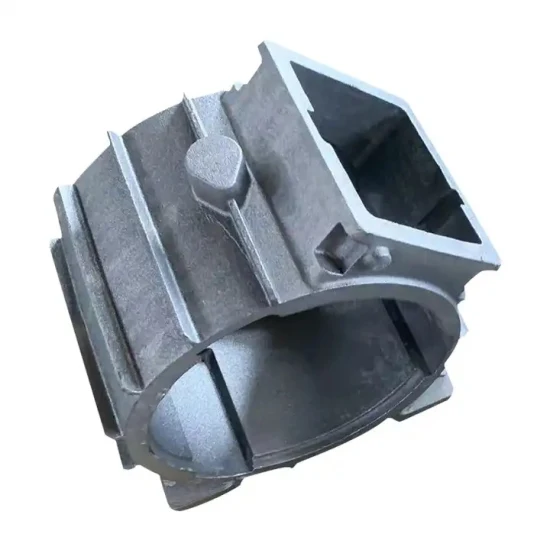Alcast Company for Dummies
Table of ContentsThe Basic Principles Of Alcast Company The Only Guide to Alcast CompanyAlcast Company Fundamentals ExplainedAn Unbiased View of Alcast CompanyThe Ultimate Guide To Alcast CompanyFacts About Alcast Company Uncovered
Chemical Comparison of Cast Light weight aluminum Alloys Silicon advertises castability by lowering the alloy's melting temperature level and improving fluidness during casting. In addition, silicon adds to the alloy's toughness and use resistance, making it beneficial in applications where durability is essential, such as vehicle components and engine parts.It additionally enhances the machinability of the alloy, making it much easier to process into completed items. In this method, iron contributes to the general workability of light weight aluminum alloys. Copper boosts electric conductivity, making it advantageous in electrical applications. It also boosts corrosion resistance and includes in the alloy's total toughness.
Manganese adds to the toughness of aluminum alloys and boosts workability. Magnesium is a light-weight element that gives stamina and impact resistance to aluminum alloys.
Facts About Alcast Company Uncovered
It allows the manufacturing of lightweight parts with outstanding mechanical residential or commercial properties. Zinc improves the castability of aluminum alloys and aids manage the solidification procedure throughout spreading. It boosts the alloy's strength and hardness. It is typically located in applications where elaborate shapes and fine information are essential, such as decorative spreadings and certain automobile components.

The primary thermal conductivity, tensile stamina, return stamina, and prolongation vary. Select ideal resources according to the efficiency of the target product created. Amongst the above alloys, A356 has the highest possible thermal conductivity, and A380 and ADC12 have the most affordable. The tensile restriction is the opposite. A360 has the very best yield strength and the greatest prolongation price.
Some Known Questions About Alcast Company.

In accuracy spreading, 6063 is appropriate for applications where detailed geometries and top notch surface area finishes are paramount. Examples consist of telecommunication units, where the alloy's exceptional formability enables sleek and aesthetically pleasing layouts while maintaining structural honesty. Similarly, in the Lights Solutions industry, precision-cast 6063 elements create classy visit this website and efficient illumination components that call for intricate shapes and great thermal performance.
The A360 displays remarkable prolongation, making it perfect for complicated and thin-walled elements. In precision casting applications, A360 is fit for sectors such as Customer Electronics, Telecommunication, and Power Devices.
Alcast Company Can Be Fun For Everyone
Its distinct residential properties make A360 an important selection for accuracy spreading in these industries, boosting product longevity and high quality. Aluminum alloy 380, or A380, is a commonly utilized casting alloy with a number of distinct characteristics. It uses superb castability, making it an ideal option for accuracy spreading. A380 shows good fluidity when molten, guaranteeing intricate and comprehensive mold and mildews are precisely recreated.
In accuracy spreading, light weight aluminum 413 radiates in the Consumer Electronic Devices and Power Devices sectors. This alloy's remarkable rust resistance makes it an outstanding option for outdoor applications, ensuring durable, sturdy items in the discussed sectors.
Some Known Details About Alcast Company
As soon as you have made a decision that the aluminum die casting process appropriates for your project, an important next action is choosing on one of the most ideal alloy. The light weight aluminum alloy you pick will significantly affect both the spreading process and the residential or commercial properties of the last product. Due to this, you should make your choice thoroughly and take an enlightened approach.
Figuring out one of the most ideal aluminum alloy for your application will certainly suggest evaluating a broad range of features. These comparative alloy qualities comply with the North American Die Spreading Organization's guidelines, and we have actually divided them into two classifications. The very first category addresses alloy characteristics that affect the manufacturing process. The 2nd covers characteristics affecting the residential properties of the final product.
The 3-Minute Rule for Alcast Company
The alloy you select for die spreading straight impacts a number of aspects of the spreading procedure, like exactly how easy the alloy is to function with and if it is prone to casting defects. Warm breaking, additionally understood as solidification fracturing, is a normal die casting flaw for aluminum alloys that can result in interior or surface-level tears or fractures.
Certain light weight aluminum alloys are much more at risk to hot cracking than others, and your choice should consider this. One more usual problem found in the die casting of light weight aluminum is die soldering, which is when the actors sticks to the die wall surfaces and makes ejection difficult. It can damage both the actors and the die, so you should search for alloys with high anti-soldering homes.
Deterioration resistance, which is currently a significant feature of light weight aluminum, can differ significantly from alloy to alloy and is a crucial characteristic to consider relying on the ecological conditions your product will be revealed to (Foundry). Use resistance is an additional home typically sought in aluminum products and can differentiate some alloys